Heart Health
Understanding Heart Disease
On average, your heart beats 100,000 times and pumps close to 2,000 gallons of blood throughout your body each and every day. Our hearts are constantly working to send oxygen and nutrients to the cells throughout our bodies and remove waste products. Our hearts are key to keeping us healthy.
Sadly, heart disease is the leading cause of death for both men and women in the United States and responsible for one in four deaths. Sometimes people do not even know they have it, until they experience a heart attack or heart failure.
According to the Centers for Disease Control and Prevention, in the United States, someone has a heart attack every 40 seconds. A heart attack occurs when the flow of blood to your heart is blocked. Over time, fatty deposits build up, forming plaques in your heart's arteries. If a plaque ruptures, it can block blood flow, which can damage or destroy your heart muscles.
We are all at risk for heart disease but, fortunately, with healthy lifestyle choices we can greatly reduce our risk.
Heart disease is responsible for 1 in every 4 deaths in the United States.
Are you at Risk?
Several factors can help determine your risk for heart disease including your age, lifestyle and health conditions. Some risk factors you can control, these are known as modifiable factors, and others you cannot, these are known as unmodifiable. According to the CDC, almost half of all Americans have at least one of three key risk factor for heart disease: high blood pressure, high cholesterol and smoking.
Modifiable Risk Factors
- High Blood Pressure
- High Cholesterol
- Smoking
- Lack of Exercise
- Obesity
- Stress
- Birth Control Pills
Unmodifiable Risk Factors
- Age
- Gender (women are at higher risk of heart disease than men)
- Family Health History
- Diabetes
- Hormone Level
If you have any of the risk factors listed in the chart above, consider reaching out to your primary care physician. While you cannot change your unmodifiable risk factors, your doctor can work with you to develop a plan to lower your risk of heart disease by managing the factors that are in your control. If needed, your doctor can also refer to a cardiologist.
Signs of a Heart Attack
Knowing how to recognize the signs of a heart attack could make the difference between life and death. The faster someone can get to the hospital, the sooner they can be treated, ultimately reducing the amount of damage done to the heart.
Here are the signs you need to know:
- Chest Pain or Discomfort: Most heart attacks involve discomfort in the center or left side of the chest. Typically, it lasts for more than a few minutes or goes away and comes back. The discomfort can feel like pressure, squeezing, fullness or pain.
- Feeling Weak, Light-headed or Faint: Some people also break out into a cold sweat.
- Pain or Discomfort in the Jaw, Neck or Back
- Pain or Discomfort in One or Both Arms or Shoulders
- Shortness of Breath: This often accompanies chest discomfort but shortness of breath can also happen before chest pain begins.
There are also some atypical signs of heart attack that are also important to know. Most often, these are seen in women, diabetics and older adults.
- Pain in the Upper Abdomen
- Nausea
- Fatigue
- Severe Weakness
- Lightheadedness & Fainting

All of these symptoms should be taken seriously and should not be overlooked. If you or someone close to you has any of these symptoms, seek treatment immediately.
At the first sign of a heart attack call 9-1-1. Getting to the hospital quickly, is key to long-term recovery.
CPR Saves Lives
CPR, also known as Cardiopulmonary Resuscitation, is a lifesaving procedure that can keep blood flowing when the heart stops beating. According to the American Heart Association, performing CPR immediately after someone experiences cardiac arrest can double or even triple their chances of survival.
If you would like to become trained in CPR, please contact our Education Department at (208) 542-7311 or visit the American Heart Association to find other local classes.
Even if you are not certified in CPR, if you see someone suddenly collapse, you can help save their life by calling 9-1-1 and then pushing hard and fast in the center of their chest until first responders can arrive.
Watch this video from the American Heart Association for a CPR demonstration for teens and adults.
Protect Your Heart
Every day, you can make choices to reduce your risk of heart disease and heart attack.
- Make Healthy Food Choices
- Limit Your Alcohol Intake
- Reduce Your Stress
- Move Your Body Every Day
- Stop Smoking
- Maintain a Healthy Weight
- Manage Your Diabetes
- Control Your Blood Pressure
One of the best things you can do for your heart is to maintain a healthy weight. When you are overweight, you are forcing your heart to work harder, which can put a lot of stress on it over time. To lose (or maintain) your weight, eat lots of vegetables, fruits and lean proteins, such as chicken or fish. Do your best to limit processed foods, which can be packed with sodium and sugar. And, of course, make sure you are getting regular exercise to help reduce your risk of heart disease, lower your blood pressure, cholesterol and blood sugar levels.
Eating with Heart
The foods you eat can have a huge impact on your heart. To live a long, healthy life, it is important to make sure you are getting all of the nutrients your body needs and trying to limit highly processed foods. Here are five simple tips on how you can eat for your heart.

Eat More Vegetables
A diet filled with vegetables has been shown to help reduce the risk of heart attack, stroke, prevent some cancers and have a positive impact on blood pressure. Still need more convincing? Vegetables are packed with nutrients, fiber and potassium – things most Americans do not get enough of in their diets. It has also been shown that people who eat more vegetables and less processed food are more likely to lose weight. It is important to eat lots of different types of vegetables, so branch out and add more to your salad than just lettuce.

Watch out for Salt
Believe it or not, limiting your salt intake can actually help lower your blood pressure and improve your heart health. When you consume a lot of sodium, your body pulls more water into your bloodstream, which, overtime, can have negative impacts on your health. To cut down on your salt intake, you need to be conscious of your salt shaker but even more wary of processed foods. Pizza, bread, canned soup and processed meats may be secretly packing your diet full of sodium.

Say Yes to Healthy Fats
Fat is not created equal. Saturated fats are unhealthy and should be limited. But unsaturated fats are an important part of your daily diet and can actually help improve your overall health. Unsaturated fats are found in fish, avocados, nuts, seeds and olive oil. Eating this type of fat can actually help lower your cholesterol and reduce your risk of heart disease.

Reduce your Sugar Intake
Sugar is sweet but its impacts on our health are not. Consuming too much sugar can put you at greater risk of heart disease and diabetes – it can even take years off of your life. Sugar is found in desserts, cereals and almost all processed foods. Be sure to check nutritional labels! According to the American Heart Association, women should aim to have no more than six teaspoons of sugar a day and men should aim for no more than nine teaspoons.

Eat the Rainbow
Every day aim to eat a variety of different color fruits and vegetables to maximize the nutritional benefits of your produce. Important disease fighting and immune boosting phytochemicals are associated with different colors of fruits and vegetables. Red foods are good for fighting cancer. Orange fruits and veggies keep your immune system strong. Yellow produce is good for your eyes. Green foods help to detoxify your body. Produce that is blue or dark purple helps to keep your heart healthy and brain running strong.
Helpful Resources


